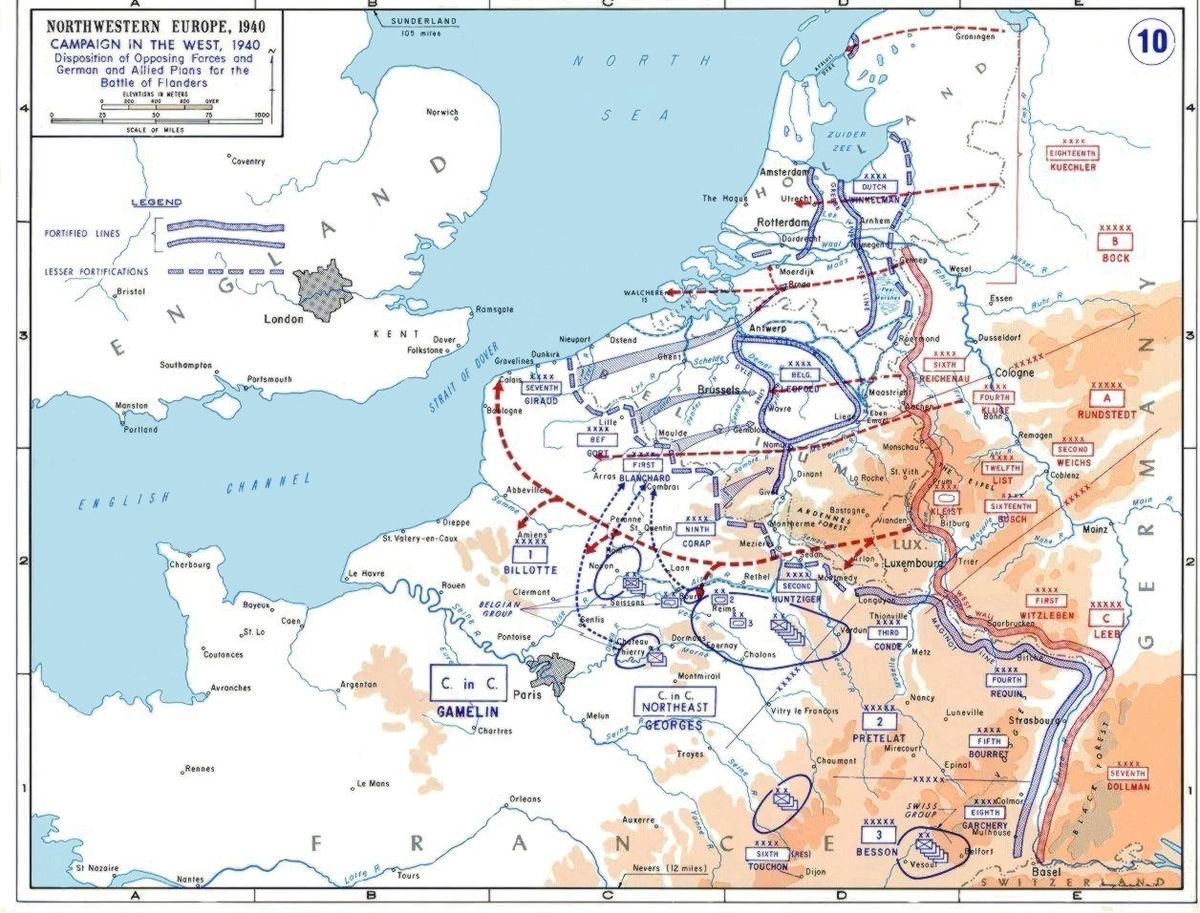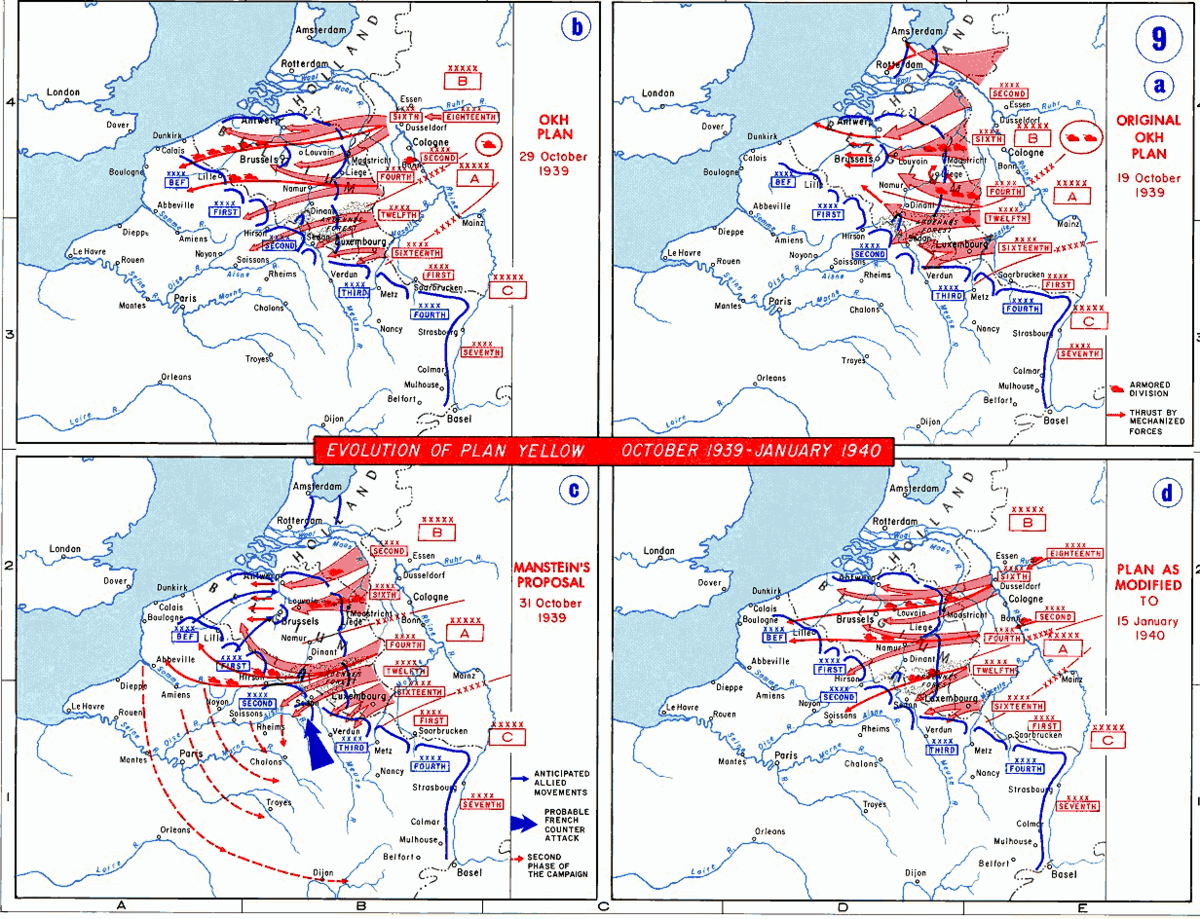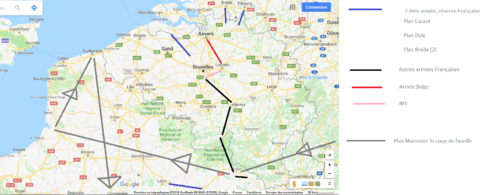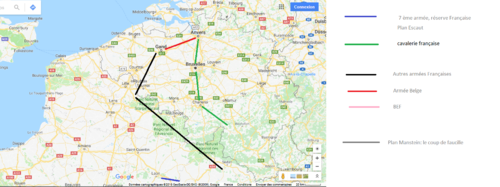Where to start ? blow the French HQ in Vincennes, for a start. Ensure not missing Gamelin.
More important than that... discussing on the French Fights On forum / La France continue la guerre since 2007 has been an eye opening to me.
http://1940lafrancecontinue.org/forum/
Look at these two links and weep.

en.wikipedia.org

en.wikipedia.org
To make a long story short...
ON THE GERMAN SIDE
1 - By October 1939 Manstein "sickle cut" through the Ardennes, south Belgium, did not existed yet.
2 - The German war plan was a very bad repeat of Schlieffen, 1914, in central Belgium flatlands.
3 - The Anglo-French were all too aware of that and thus the bulf of BEF + 2/3rd best French armies were to dug and fend there.
4 - By March 1940 the sickle cut has been adopted.
ON THE FRENCH SIDE
Take a map. Look at three places: Escault, Dyle, Breda. And now, fasten your seat belts...
1 - Escault is a river in northern France, near the Belgian frontier, in the flatlands
2 - Dyle is a river right in the middle of Belgium
3 - Breda is at the corner of Belgium, Northern Germany... and the southern tip of The Netherlands.
So what happened ? Very simple.
1 - In the fall of 1939, France was to fight on its territory, that is, on the Escault
2 - In the winter, Belgium asked for help, so the French Armies would enter their territory ASAP when the German attacked, and advance to the Dyle
3 - in March 1940, it become politically impossible to abandon The Netherlands while fighting for Belgium, so Breda become the new defensive line.
Thanks Daladier and Gamelin for that utter siliness.
And there... Generan Giraud 7th Army, FRANCE
STRATEGIC RESERVE ARMY was taken out of
Reims and told to push to Breda when the German attacked.
So, in a nutshell.. while the Sickle cut moved the Schwerpunkt from north (Gembloux) to south (Sedan), the French armies encounter point shifted West to East by 300 miles - from
Escault to Dyle to Breda.
Basically, the French and Germans were to clash head-on in central, flatlands Belgium.
As they rushed toward each others, the Germans dodged, flexed their knees, and hit in the french in the belly or even in the testicles - from below.
The French tried to send an uppercut from a long distance, but their armored fist (Giraud 7th army, now in Breda) went way above the German head and landed in vacuum.
Then the german punch in the french belly literally cut them in two.
When the Germans on May 14, 1940 broke the frontline and advanced like crazies, passing north of Paris, direction Abbeville on the coast to close the future Dunkirk pocket, they went past
Reims... where there was no 7th Army to march toward them and stop them, BECAUSE THAT FUCKING ARMY HAD BEEN SEND TO BREDA IN THE NETHERLANDS 200 MILES NORTH.
That's the reason why, when Churchill asked Reynaud on May 15, 1940 "where is your strategic reserve army ?" Reynaud just wept. It had been send to freakkin' Breda.




